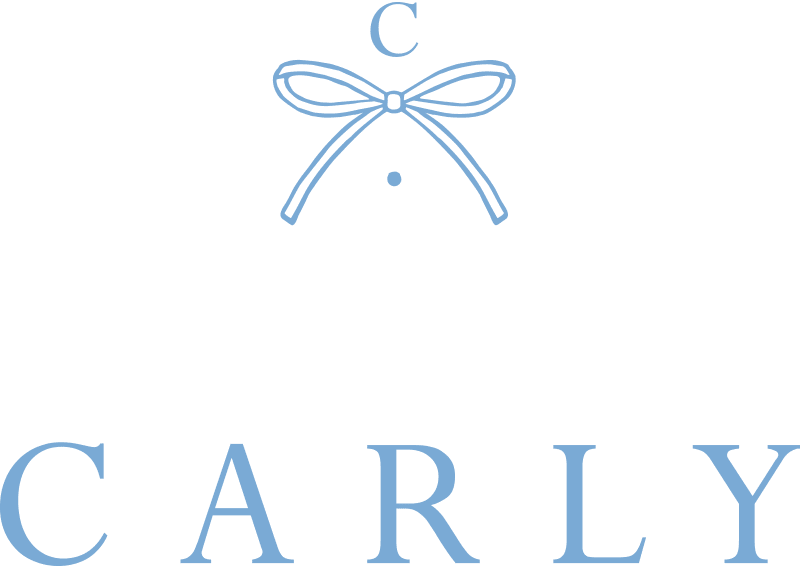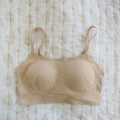One of the best ways, in my experience, to manage anxiety is through biofeedback exercises. I have been a highly anxious and sensitive person as you likely know if you’ve been reading here for a bit. I don’t think there’s a cure for anxiety; I really believe it’s just how I’m wired. But actively managing anxiety and working on healthy coping mechanisms can making living with anxiety totally a doable. There is so much outside of what I can control, but with these strategies, I can control (to a certain extent) how I react.
(This is coming from a personal experience, I’m obviously not a doctor of any kind.)
There are times when I can pinpoint exactly what set my “panic button” off and there are other times when it seemingly comes out of nowhere, like the button is just poorly wired. Because I’m so used to contributing a racing heart to anxiety, my brain can read a racing heart as feeling anxious instead of realizing it’s from, I don’t know, going for a run. Logically, I know it’s from running… but there’s just something off (that’s the best way I can describe it) and the racing heart can make me feel anxious. If you’ve experienced anxiety, maybe you understand what I’m saying. It’s weird! And often makes no sense! (It’s also why one of the worst things you can say to someone panicking is “relax”– it’s like, yes, if I could relax I would.) Over the years I’ve come to terms with the fact that it’s just something I have to deal with and, while it doesn’t define who I am, it is a part of what makes me me.
My mom used to use “biofeedback” with me all the time. I actually thought for a while it was her own made up word because I had only ever heard her say it. But it’s a thing! And not only is it a thing, it’s a highly effective thing, especially the more you practice it. I use these specific techniques for anxiety, but you can find ways to use biofeedback for a myriad of ailments. It’s worth looking into. Again, it’s not a cure, but it’s a management tool. Very succinctly: “Biofeedback is a self‐regulation technique through which patients learn to voluntarily control what were once thought to be involuntary body processes.” (source) Specifically for me, it’s a way to lower my heart rate, manage my blood pressure, and manage my adrenaline flow. If you were to go to a biofeedback clinic, you’d be hooked up to machines measuring your body’s response, but I fully believe you can do this at home without needing to be hooked to a machine. (Though I’ve used my Apple Watch to track heart rate changes during/after a panic attack and the data is super interesting, ha.)
There are a ton of ways you can practice techniques with biofeedback, but here is what works best for me. I think it’s worth noting that it can feel weird at first… so if you feel silly, don’t worry, you’re doing it right. The worst of my anxiety is usually triggered by something control related, so I especially like that with biofeedback practices, you are taking control of your body’s response. Even the small act of doing something can help alleviate a little bit of the mental stress because I’m actively trying to regain control instead of just letting my brain/body go.
ALTERNATE NOSTRIL BREATHING: This is the weirdest one but I find it to be the most effective. I love it for a lot of reasons and once you get the hang of it, it becomes second nature. It can look weird if you’re doing it in public, but I’ve done it on an airplane before and no one batted an eye 🤷🏻♀️ Take your pointer finger and thumb on your dominant hand and make an “L” (like loser as if whatever), your thumb will go on one side of your nose and your pointer finger on the other. Push your thumb against one nostril so it closes, breathe in as much as you can through your open nostril, hold that breath and simultaneously release your thumb and plug your other nostril (the one you just breathed through) with your pointer finger. Release the breath fully through the thumb-side nostril. Breathe back up through the thumb side, hold, switch fingers, and release from the pointer finger side. Here’s a video demonstration (I use my pointer finger but it’s the same idea!).
4-7-8 BREATHING: This is also a breathing exercise, but you can do this one a little more discreetly. The official way to do it is to breathe in for four seconds, hold the breath for seven seconds, and release the breath for eight seconds. I had a therapist have me do 5-5-5 (in for five, hold for five and out for five) so I’ve stuck with that personally.
PROGRESSIVE MUSCLE RELAXATION: I do this every single night to fall asleep. You start in your toes and slowly work your way up your body relaxing every part. I really have to focus to get muscle groups to relax but the moment the tension releases, it feels so good. So I go: toes, feet, ankles, calves, knees, thighs, etc. Right up to my forehead! I find that the best way for me to get my muscles to release and relax is to take a breath in and on the exhale picture the body part relaxing. It takes practice!!
HAND OVER HEART: I don’t know what the technical term for this is or even if it’s an official technique, but it works for me! I do this laying down completely flat or sitting up with a straight back. I put one hand on my heart so I can feel the thumping of my heartbeat…. then I put my other hand on my belly. The key is to try to breathe deeply into your diaphragm so your chest stays level and your stomach is what moves out with the breath. I count the breaths doing this one for the breath in, two for the breath out, three for in, four for out, up to ten and then I reset and do it again. With your hand on your heart, you should start to feel your heart rate decrease which is of course reassuring when you’re feeling panicky and I like that your hand rests on your heart like a little personal support system.










Thank you for sharing these, Carly! I love your posts like this. A few more techniques I’ve learned and used in the middle of a panic attack — one is to find something really cold to hold in your hand (like an ice cube) to divert your attention away from the attack. I’ve done this with a cold steering wheel during winter driving anxiety. Another one is to list out (either out loud or in your head) 3 things you can hear and 3 things you can smell or see around you in the moment, and repeat.
I never knew there was a name for this! I’ve been doing alternate nostril breathing and the 4-7-8 method to combat anxiety for years! At least now I’ve got an actual term to explain what I’m doing. 🙂
Put a rubberband or two on your wrist and “pop” them. As the other techniques, it is meant to divert your attention.
Excellent post. Thank you for sharing.
Thank you for this. My mother was a biofeedback therapist at a university’s pain management clinic for 15 years before being diagnosed with Alzheimer’s. She helped people who came in with chronic pain that could not be treated medically, or who were facing a huge lifestyle change as a result of a medical issue (e.g., a beat cop who had been shot and now had to work at a desk). This was the 80s, and it was a groundbreaking idea at this place. I was younger and never really knew what biofeedback meant, but seeing this makes me realize she taught me and practiced these techniques with me all the time! I now use them with my children–the sleeping one is especially helpful! I am reading a novel and I also like one the protagonist uses. 1) name five things you can see. 2) four things you can hear. 3) three things you can touch. 4) two things you can smell. I don’t know if I have those in the right order, but you get the idea.
I have been trying the name five things you can see, smell, hear, taste. Grounding technique.
This is so helpful. I always do breathing techniques before I go to bed to calm down and relax.
http://www.elspethsdaybyday.com
Thanks for the tips! I have anxiety too and have been trying a new breathing technique to stimulate the vagus nerve (which is stops the flight or fight feeling). One should take a deep breaths, and when breathing out make a “AAAHHH” sound, like when one is deeply satisfied. It’s been working well so far but I am glad to have a few new things to try! Thanks for the post!
Carly! Just this morning I had in mind that I might send you an email and ask if you could consider another post about how to manage anxiety in these tough times. I found your recent articles on this topic super helpful. So I am very very happy for this post and the inspiration. With all the reopening here in Germany and “back to normal” vibe going on I felt my anxiety level rising in the last few days. Seeing a lot of people not social distancing anymore or even demonstrating against stay at home orders has made it really hard for me to cope. So thank you so much for this article! Your blog is my go-to page for a reason 🙂
I’ve heard/done most of these, the alternate nostril breathing was recommended by a yoga teacher, and the progressive muscle relaxation is what helps me fall asleep when I have a hard time. But I should totally try these to relieve anxiety! Thanks for the tip 🙂
I cannot thank you enough for writing about anxiety – you’re the reason I started using Headspace and I feel like it has helped me in the past couple of years.
This post resonated with me and I am happy to learn about the alternate nostril breathing exercise. I will try that out!
Thank you for sharing, Carly! Your posts have been so comforting and helpful in navigating these crazy times.
http://alexagmarsh.blogspot.com/
Thanks for sharing! I find that tactile exercises help ground me. My kids taught me the starfish exercise which they learned at school. (So grateful teachers are embracing mindfulness in their classrooms!) It involves breathing while tracing a finger up and down to outline your other hand. Very easy to do without attracting attention, and works wonders for me.
I love the 4-7-8 breathing. I’m definitely going to try the progressive muscle relaxation!
https://petuniaspicks.com/
I use the 4-7-8 breathing technique alllll the time and it’s super helpful. I will try the alternating nostril breathing – I’m intrigued.
I just have to make a small plug that if you are struggling, seek help from your primary care physician who will point you in the right direction. Sometimes you need medication just to get to a place where these techniques can even begin to be effective.
Thanks Carly for being there for your readers and being authentic and vulnerable. Your daily gratitude list has also been an example of a good tool that has helped reduce my anxiety.
Love these tips! I do pretty much all of them. The nostril one is new to me so I’ll have to practice that when unfortunately the time comes 😬 anyway, I appreciate you talking about anxiety. Makes it feel more normal!
Much needed. Thank you for sharing this.